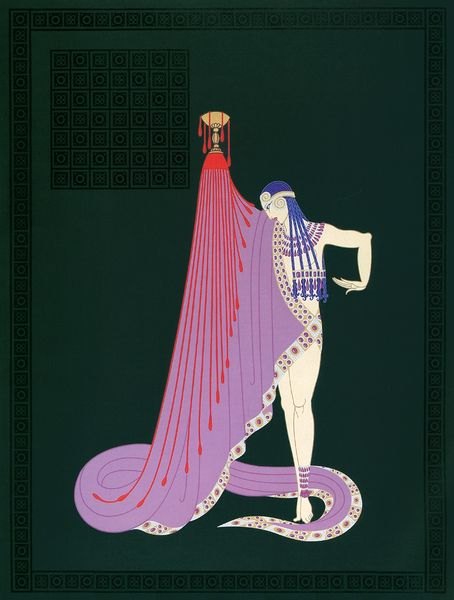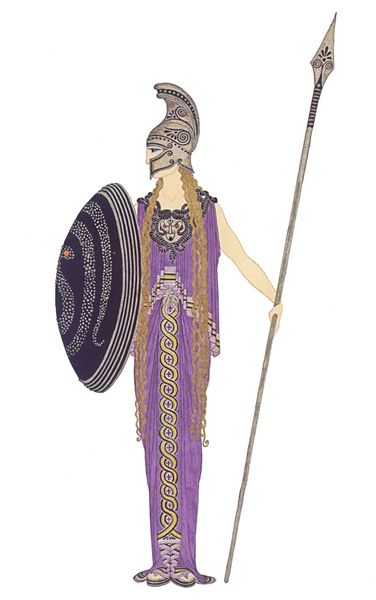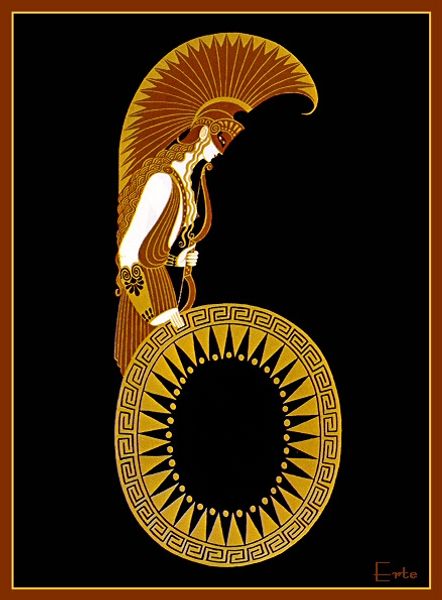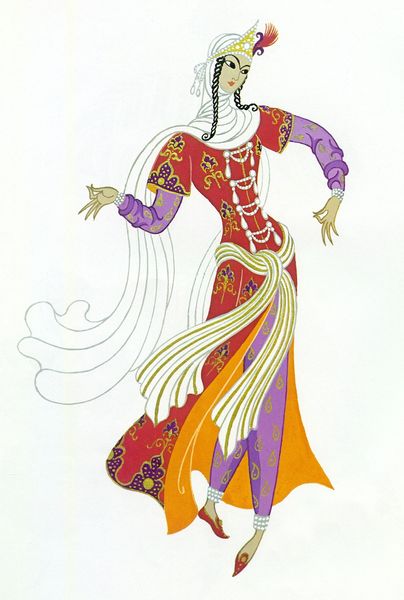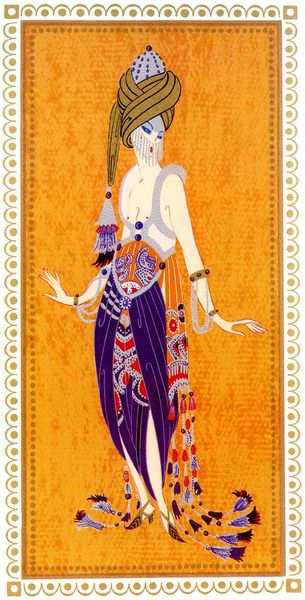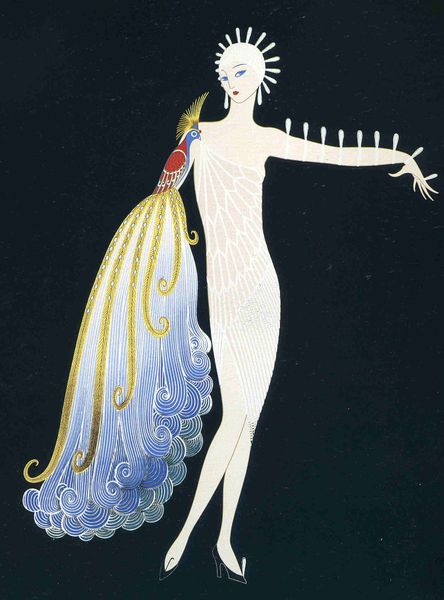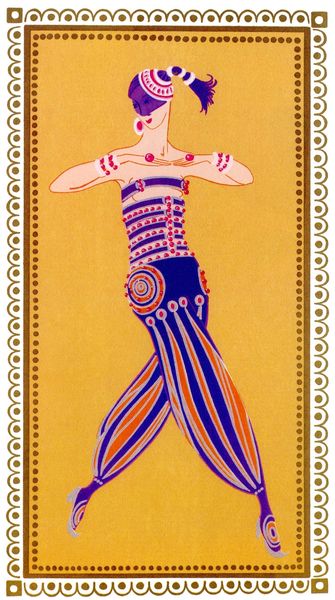
graphic-art
#
art-deco
#
graphic-art
#
pop art
#
figuration
#
costume
#
erotic-art
#
motif
Copyright: Erte,Fair Use
Editor: This graphic piece, "Slave of Salome, George Whites Scandals" by Erte, showcases some fantastic graphic art elements. The flowing lines of the dress and the woman’s pose exude a seductive calmness. What captures your eye about this piece? Curator: Well, isn't it luscious? Immediately, I'm swept into the Art Deco movement's embrace of luxury and theatricality. Those cascading strands! They’re not just decoration; they're liquid fantasy. Imagine them shimmering under stage lights during a performance of George White’s Scandals. The opulence isn't merely visual; it’s a sensory experience waiting to unfold. Don’t you think? Editor: Absolutely. They give such an extravagant effect with the shading and colour, really showcasing the art deco look. Curator: The use of color, the way Erte captures this feminine ideal—it’s almost dreamlike. But there's also an undeniable current of... well, exploitation, isn't there? This idea of a woman, the "Slave of Salome," reduced to spectacle. Does that resonate with you? Editor: It’s an important contrast; I never thought of this work in terms of the potential underlying context behind "the slave", even with such gorgeous motifs that create such a visual appearance and narrative, this opens up further questions around artistic depictions of female figures during this time. Curator: Exactly. It makes one consider if, in admiring the surface beauty, we risk glossing over deeper societal power dynamics at play? Still, though... isn't the execution simply divine? It speaks volumes about Erte's masterful vision, doesn't it? Editor: Yes, it definitely presents a very potent tension between surface aesthetic and underlying meaning; it's truly interesting.
Comments
No comments
Be the first to comment and join the conversation on the ultimate creative platform.
